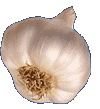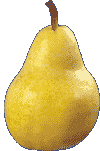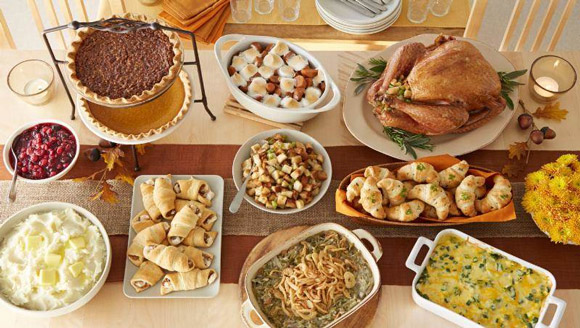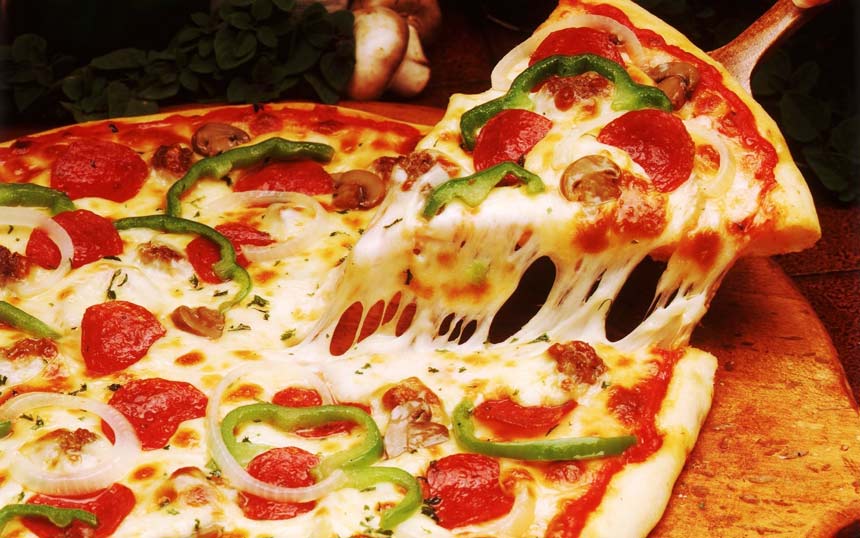The Dogg's Advice
Here is a short gathering of some advice from Snoop and some of his friends.
How to buy Fruits and Vegetables
Source: Thin Lizzy
How do you ensure that the stuff you buy from market for cooking is always fresh? You are at luck. Here is a list of 21 common fruits and vegetables and tips to pick up the fresh ones.
Here is the first thing you should always bear in mind. There are several ways used by the supermarkets and shops to lure the customer into buying their fruits and vegetables. Most often they make the fruits look fresh by making them look colorful.
Please bear in mind that organic fruits and vegetables may not look as colorful or smooth as inorganically grown ones but they often taste better. As a general rule, try to avoid those that have any blemishes in them.
Below are some of the common fruits and vegetables you use every day and the tips to ensure that you are picking up the good ones.
- Apples — Always look for bright colored apples. Avoid bruises or blemishes
- Bananas — Good bananas will be firm and yellow and they will not have any dark bruises. If banana has got any bruise, it is likely to get spoiled quickly when compared to other fruits.
- Beets — Good Beets will have a firm and round shape. Other qualities to keep in mind while selecting this are smooth surface and rich red or gold flesh color. Always try to choose the slender main root.
- Broccoli — They should have dark green florets and should be crisp. There should be no yellow flowers.
- Carrots — Always choose well-shaped, smooth, firm and bright. Don’t pick up the ones with splits or wilting.
- Cauliflower — Check whether there are any dark spots. If they have black spots then avoid those cauliflowers. Try to pick the ones with firm white heads.
- Celery — Pick up the celery with light green crisp leaves.
- Cherries — Dark sweet cherries are deep red and some are almost black. One of the bad things about cherries is that they bruise easily. Because of this you should ensure that you should consume it as quickly as possible. The fresh varieties comes to the market in May to August time period.
- Corn — Choose the one with fresh husks, bright color and silk ends. They should be plump but not mature.
- Cranberries — Deep burgundy color indicates ripeness. Avoid blemishes. Bright color indicates that it is unripe. Cranberries can be frozen for up to one month. We get fresh cranberries during the October to December period.
- Cucumbers — Cucumbers will be having green to white green color when ripe. Shriveled ends yield bitter, tough taste and texture.
- Garlic — Select the Plump ones with firm bulbs.
- Lemons and limes — For more juice, choose smooth skin and a thin peel that gives easily to hand pressure. For zest or slicing, choose firm, rough skinned fruit. Avoid the limes with yellow spots.
- Onions — Choose brittle paper skin. There should not be any soft or moldy spots. Sprouting or woody center indicates spoilage. Onions should be stored in a dry place at room temperature otherwise there is a chance of them getting spoiled fast.
- Parsley — Choose the ones that are fresh looking and not wilted. Trim and inch of the stem bottoms and store the bunched parsley in a glass of water in the refrigerator to keep it fresh.
- Pears — Select the ones that are Ripen in closed paper bags at room temperature with no light. Color depends on variety.
- Peas — Always remember that the peas are sweetest when plump. Choose full pods and pale green color. Fresh peas are available from February to September period.
- Raspberries — Berries mold rapidly and crush easily. Prepare and use within a 24-hour period. Fresh raspberries are available from May to January.
- Strawberries — Select the ones that have a deep bright color with full green caps.
- Tomatoes — Color can vary depending on variety. Choose tomatoes that appear firm, plump, well-shaped and smooth. They should not have any blemishes. To ripen them evenly, place in a closed paper bag.








Top Tips For Preparing a Meal
Source: myfoodblog.com
Another week, another fresh opportunity for being organized and on top of the weekly meals. You might have found a new method for getting organized that promises to have you scheduled with sharp precision, but before long you find yourself back to old ways.
Why? Because the golden rule of meal planning is to follow the method that best suits you. For some, that’s making a written list, for others it’s an online system or a kitchen whiteboard. So, stay true to one method, follow through with it and make sure to consider these 5 top tips for meal planning:

Collect your family’s favorite recipes
Finding recipes that satisfy the whole family can be a little bit of a challenge, particularly if your household has a fussy eater or two. So when you find a gem, make sure to save it. A great system for doing this, is by making personalized cookbooks on myfoodbook and then collecting your favorite recipes in these books.
Try making a folder for easy Monday meals and adding in recipes that take under 20 minutes or making a Friday night pizza cookbook that includes your favorite pizza ideas.
Once you save your favorites, you can easily interchange these when planning the weekly meals!
Find the system that works for you
It’s all well and good to find a system that promises pure organization, but if it doesn’t suit you, then it’s best to find a meal planning system that does. Different ideas include using a template or having a written system that has a allocated spot in your kitchen.
Consider your schedule
This may seem obvious, but planning to make the most complicated dish on your busiest working day is probably not a good idea. Think about your families schedule and play to this when planning your meals. If you get home late on a Monday, try a quick salad recipe. If you know that you’re entertaining on a Friday, pick something a little more special or a pick a recipe that is good for feeding a crowd.
Make a little extra
We may be breaking all rules by declaring this – but… Shock horror, it’s okay to have leftovers for dinner. If your weekly schedule has an extra busy day, then simply double the batch of dinner from the previous night so you are ready to go. By making a little extra, you can also cover the next day’s lunch too!

Introduce food themed nights
Spaghetti Bolognese night is definitely still a thing! Extend this theme a little further to cover the week. For example, you might make Monday night salad night or Thursday night, pasta night. This idea is great for organization, but still ensures that you have a variety as you can change around your recipes each week.
How to stop your pizza base from going soggy
Source: mycookblog.com
Pizza night is the best night. Oh yes, we aren’t ashamed to admit that a night with some homemade pizza and good TV is one of our favorite non-occasions.
You settle in for the night, get ready to dig in to your delicious dinner, only to realize that your pizza base has become one soggy mess. Your toppings aren’t sticking to your pizza and those golden crispy bits are just non-existent.
We’ve been there, and it’s actually a very common kitchen mistake to make with pizza. But, never fear, there are easy ways to combat this common pizza making mistake. From knowing which sauce and cheese to use, to ensuring that your oven temperature is very hot. Here are our top tips for a great pizza base:

Use a pizza stone or perforated pizza pan
You know when you make a perfect piece of crispy toast, pop it on a plate with some spread and all of a sudden it’s soggy? Well, the same thing happens with pizza. The moisture and heat can’t escape through the plate or in this case, pan, which causes a soggy result.
That’s why using a stone or a perforated pan with holes for the hot air to escape, will have a great effect on your pizza base.
Heat your stone or pizza pan before adding your pizza
Not only is this essential when using a pizza stone as it will crack if it’s put straight into a hot oven, but it also helps to keep your pizza at an essential high heat. This is also the best way to get a good crispy base.
Why you need to use the right cheese for pizza
Use the wrong type of cheese on a pizza, and the result can really affect your pizza base. The best way to ensure that your cheese texture and flavor is balanced, is by using a blend of 3 cheeses. Mozzarella for that great cheese stretch, cheddar for a great cheese flavor and parmesan for sharpness. This also ensures that your cheese doesn’t become oily and add to the softness of your pizza base.
Don’t overload your pizza with toppings
As the old saying goes, less is more. As a common rule of thumb, try not to overload your pizza with more than four ingredients. Be particularly considerate of ‘wet’ ingredients that are likely to produce moisture. This includes ingredients such as fresh tomatoes and zucchini.

Why your oven temperature needs to be hot for pizza
Pizza requires a very high oven temperature. So, be sure to let the oven pre-heat for longer than you would with any other cook. The best way to ensure your oven reaches its peak heat, is to buy an internal oven thermometer.
Only add your pizza, once the temp has reached its peak, and you will soon have the ideal crispy pizza crust.
Use a concentrated pizza sauce for pizza
There’s a good reason that we use concentrated tomato paste or passata for classic pizza sauce. This kind of sauce has the majority of the water content from the tomatoes removed.
The same applies when using a creamy sauce base or a ricotta pizza sauce base. Make sure to only use white sauce that has been thickened, and a smooth ricotta that doesn’t have any liquid in it.